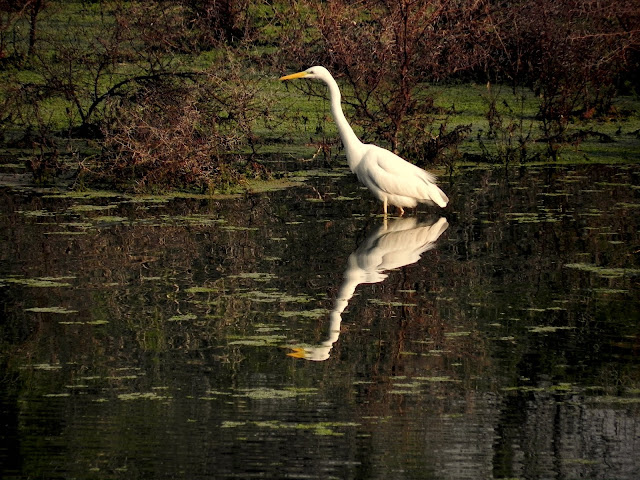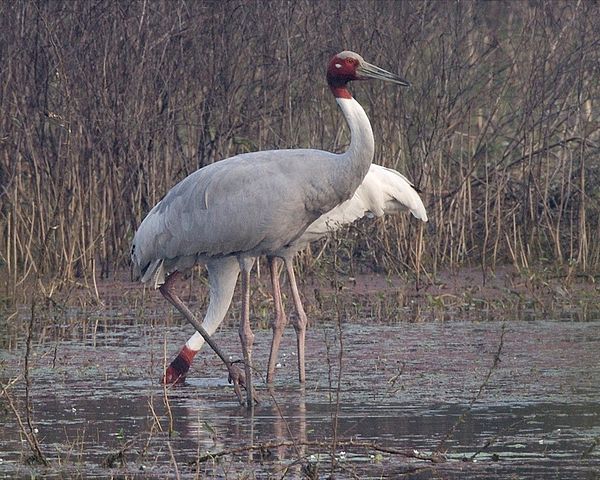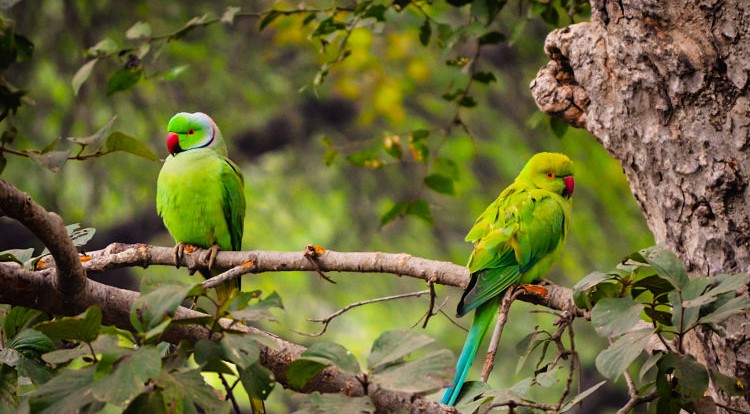Keoladeo National Park or Bharatpur Bird Sanctuary, is located on National Highway 11 in the Bharatpur district of Rajasthan state India. This is the largest bird sanctuary in India. Keoladeo National Park was earlier known as a Ghana bird sanctuary.
Thousands of rare and extinct species of birds are found in it, such as cranes from Siberia, which come here during the winter season. Here 230 species of birds have made their home in this National Park of India.
It has now become a very large tourist destination and centre, where ornithologists come in abundance in winter. It was declared a protected bird sanctuary in 1971 and later in 1975, it was also been declared a ‘World Heritage
History of Bharatpur Bird Sanctuary | Keoladeo National Park Rajasthan
Ghana Pakshi Vihar Bharatpur was constructed 250 years ago and is named after the Keoladeo (Shiva) temple. This temple is located in this bird sanctuary.
Due to the natural slopes here, floods were often encountered. The ruler of Bharatpur, Maharaja Suraj Mal (1827 to 173) built the Ajan Dam here, this dam was built at the confluence of two rivers, Gambhir and Banganga.

This birdhouse becomes the ‘second home’ of rare species of birds in the winter season. Many endangered species like Siberian Cranes, Ghomra, Northern Shah Chakwa, Jalapakshi, Lalsar Duck, etc., etc. take shelter here.
Bharatpur Bird Sanctuary in India
Keoladeo Ghana National Park was the favourite hunting ground of the Maharajas of Bharatpur, which had a tradition even before 1750. Here, the annual hunting of birds was organized in honour of the British Viceroy.
In 1937, about 6,283 birds were hunted in just one day, and birds like milord and teal were killed in abundance. The Governor of India at that time was General Linlithgow, who, along with his colleague Victor Hope, made them his victims.
Even after the independence of India, till 1982, the former king of Bharatpur was allowed to hunt in his area, but from 1982, the banning of fodder in the park was also banned which led to violent fighting between the farmers, Gurjar community, and the government here. Made.

In the winter season, for hundreds of years, migratory birds of about 375 species have travelled thousands of kilometres from Afghanistan, Turkey, China, and remote Siberia to reach dense, According to the great ornithologist Salim Ali, this international migration of birds, an unsolved kink, is a mystery.
Keoladeo Ghana National Park becomes a paradise for bird experts and eco-lovers during the winter when exotic birds, of which more than 230 local species, of which Siberian cranes are the most notable, can be seen nesting, nesting, and breeding here. Can.
Bharatpur, a part of Braj’s mythical ‘Chaurasi Kos Parikrama’, is a part of Bharatpur, where most of the land is flat plains, but due to four major rivers – Ruparel, Banganga, Gambhiri, and Parvati, some parts of it is also marshy/alluvial and These rainy water sources have a big role in the development of dense.
Water supply to the sanctuary has also been done regularly or irregularly from the Panchana dam in the Karauli district, 90 kilometres away. The soil is generally alluvial. Situated between 27 ° 10’N and 77 ° 31′ E, this sanctuary is spread over 29 sq km.
The northern boundaries of the Bharatpur district are bordered by Faridabad in Haryana, Agra, and Dhaulpur in Uttar Pradesh in the south, and Karauli Alwar, and Dausa districts in the west. The lakes and dams here – Moti Mahal, Sahi Dam, Barren Dam, besides the Bayana Tehsil Dam, are naturally inhabited by birds around Barretha.
Throughout the year, the water of the lake only one to two meters deep remains in only 10 square kilometres of the lake, but the aquatic flora generated by this water produces a large number of fish, which are used by many species of water birds to make their food.
Our permanent camp likes to build this sanctuary. Yes, in the scorching summer, the dense forest is completely dry, and then tubewells are used. The days of the birds barely pass in the summer, but with the arrival of the rains, the brightness returns, and the whole forest, once again, starts to resonate with the birds’ tweets!

Bharatpur is just 35 kilometres from Agra, with daily flights to Delhi, Banaras, Lucknow, and Mumbai from the airport. Bharatpur is connected by several trains of the big line on the Delhi-Bombay route.
Bharatpur is connected to many parts of the country by roadways including national highways. From here there are regular bus services between Delhi (18 km) Jaipur (185) Alwar (118) Mathura (39).
Climate Keoladeo GhannaNational Park
The climate here is dry, summer is very hot, and winter is very cold. The period from February-March to June is a continuous increase in temperature. The annual average rainfall is 66.39 centimetres.
Apart from Sehi, Jackal, Python, Rabbit, Deer, etc., wild-cat can also be seen here.
Vegetation of Keoladeo National Park
In addition to savanna grasses, Cynodon dactylon and Dichanthium annulatum varieties of grass yield and a variety of shrubs are natural habitats for birds. Ghana has countless trees of Kadamb (Neolamarckia cadamba) and indigenous acacia, which are ideal for nesting birds.
In the rains, the flood is filled with floodwater, and immediately after hundreds of vegetation raise the head in the whole area.
Keoladeo National Park was included in the National Park in the year 1982 and the World Heritage Site by UNESCO in 1985.
Keoladeo National Park attracts tourists throughout the year, but the time from October to February is considered appropriate.
Keoladeo National Park timings and entry fee
7.00 AM To 5.00 PM
The entrance fee for Indian citizens is Rs. 25 and that for foreign nationals is Rs. 200. Vehicles are allowed until Shanti Kutir, which is 1.7 km inside the park. Charges levied per vehicle are Rs. 50. The video camera is charged at Rs. 200.

My self Dev Satish. I’m an Author and Founder of tourism-rajasthan.com. I’m from Rajasthan and If I talk about my Education then I’m Law Graduate. I love doing work that makes me happy, that’s why I love traveling. you will find Rajasthan travel ideas & tips on this blog.
